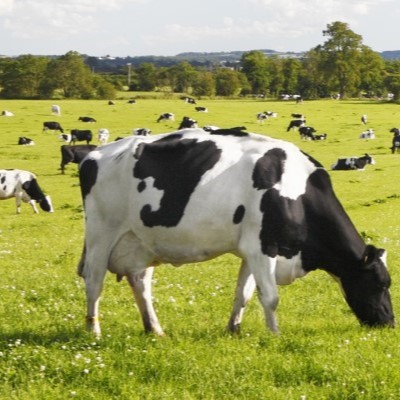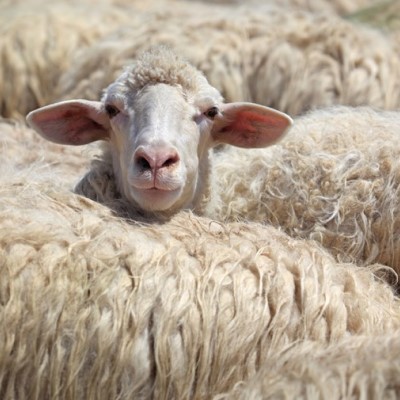CIEL | Project: GrassCheckGB – Review of the 2021 Grazing Season
Genetics | Reproduction | Behaviour | Nutrition | Health & Welfare | Productivity | Food Integrity | Environmental Impact
Aiming to develop better predictions for grass growth & utilisation is GrassCheckGB, a nationwide initiative involving 50 beef, sheep & dairy farms, working alongside CIEL, AFBI and Rothamsted Research, the three GB Levy Boards – AHDB Beef & Lamb, HCC, QMS, and industry sponsors: Datamars Livestock, Germinal, Waitrose & Partners, Handley Enterprises and Sciantec Analytical.
For the third consecutive year, grass growth, quality, soil data & meteorological data has been captured across the country throughout the grazing season.
The final figures from a season of grass growth have now been recorded which confirm what every grassland farmer knows – that it’s been a challenging year. However, many producers – farming either dairy, beef or sheep – have excelled in the face of difficult conditions, some producing average yields across the farm as high as 12 tonnes of dry matter (DM) per hectare, despite constraints on growth. And although the peak in growth was higher than in the previous 2 years, the average was lower, at 9.2t DM/ha across the monitored group.
Who has excelled?
The hallmarks of the most prolific grass growers have been noted by the GrassCheckGB (GCGB) team.
“Over the three years of the project, not one of the grass growth seasons could be considered typical,” says Dr Kathryn Huson, a research scientist with the Agri-Food and Bioscience Institute (AFBI), which has a central role in the project.
“But one of the keys to dealing with atypical conditions is adaptability,” she says. “It’s about building resilience into your system and being prepared to make use of grass when it’s available, while having the capability to deal with shortages, even when they come at unexpected times.”
2021 has clearly demonstrated this need. It’s definitely been a challenging year in which we’ve seen some extreme growing conditions and grass growth patterns shift. In fact, peak growth was very high, particularly in Wales, the north of England and Scotland, but came a week later than expected.
Spring was colder than average, with regular frosts, and April was the driest since 1980, with 28 per cent of average rainfall for the UK, combining to delay the initiation of growth. By contrast, May was very wet, especially in Wales and the south west, with 171 per cent of average rainfall overall.
The upshot was that peak growth, which would normally be at the end of May, shifted to early June. After this point, many growers continued to face challenges as frequent periods of soil moisture deficit continued through to October, holding back growth.
“Many people certainly struggled with covers in early spring, to be faced with abundance in early June,” explains Dr Huson, emphasising the need for measures such as cutting big bale silage at times of surplus, or opening bales in times of need.
“The key to doing this is having a measurement and management culture, as GCGB farmers have demonstrated,” she says. “It’s a case of knowing what grass is in front of you and being able to react to the upcoming surplus or deficit.”
Dairy, sheep or beef?
Dairy farmers’ average grass production was the highest, peaking in the week leading up to 7 June, with an average across the GCGB group of over 90kg DM/ha/day, while the peak for beef and sheep producers averaged just over 70kg DM/ha/day across the group.
“This does not mean that dairy farmers are doing a better job than those with beef cattle or sheep,” Dr Huson insists. “It’s about different systems and farms.
“There are farmers who have averaged yields of 12 –15t DM/ha in both groups over the past three years, but typically total yields are lower from the group of beef and sheep farms in the project, averaging 7 – 9t DM/ha.
Performance with lower nitrogen is more pertinent than ever as fertiliser prices rise to their highest ever levels. For many farms, lowering artificial nitrogen is already a key target. This is reflected in the higher use of swards containing legumes, particularly red and white clover. These have the unique ability to take nitrogen from the air and store it in the soil, for subsequent use by the sward or following crop.
“There is definitely scope for their even greater use and many farmers are moving to more diverse species in their leys, including a range of legumes,” says Dr Huson.
“It’s worth remembering that a sward containing 10 –20 per cent clover is estimated to fix as much as 50 – 200kg nitrogen per hectare in a year, so potentially displacing this amount of bagged fertiliser.
Grass quality
Despite the season’s slightly lower yields, the quality of grass has been consistently high, and better than both the previous two seasons. The average metabolisable energy (ME) for each period never dropped below 11MJ/kg DM and levelled over the season at 11.7 MJ/kg DM.
This demonstrates a combination of good, and perhaps improving, management and attention to grazing residuals, but was also helped by periods of sunny weather. In the Spring this also helped to achieve an average ME of 12.1 – 12.4 MJ/kg DM across a six-week period (5 April to 17 May) across all GCGB farms.
Management of grass covers
Specifically, management which promotes high ME is that which turns stock on to the right cover and removes it at the right stage.
This is likely to mean going on at no more than 3,000 – 3,200kg DM/ha, or approximately 12 cm, and also turning stock on to the cover when grass is at or just below the three-leaf stage. Once a fourth leaf starts appearing, the first leaf will die off. If swards are allowed to grow on and mature this produces more fibrous grass with a lower ME.
The residual left after grazing should also be around 1,500kg DM/ha (4 – 5cm) and certainly not below. Although the ideal pre-and post-grazing residuals will vary with the system, leaving enough post-grazing is important to support regrowth, while ensuring consistency across the residual sward will help maintain quality.
Another important factor is to balance supply and demand. If you can match the biomass available with the stock then they will eat what’s in front of them to leave a more consistent residual, but there must be enough to avoid any check in performance.
Future challenges and opportunities
Challenges for the future are to continue increasing grass yields and quality by following good practice and building adaptability into the system.
The grass growth data collected by GrassCheckGB over 3 years has been used to develop grass growth predictions for the British regions. These rely on using weather forecast data to provide 7- and 14-day estimates of grass growth rates – something which could prove invaluable to any grassland manager.
The models being developed will support better forecasting of growth rates and continued improvements in grassland planning and management.
For more information, please contact [email protected].
Visit www.grasscheckgb.co.uk for further insight.









